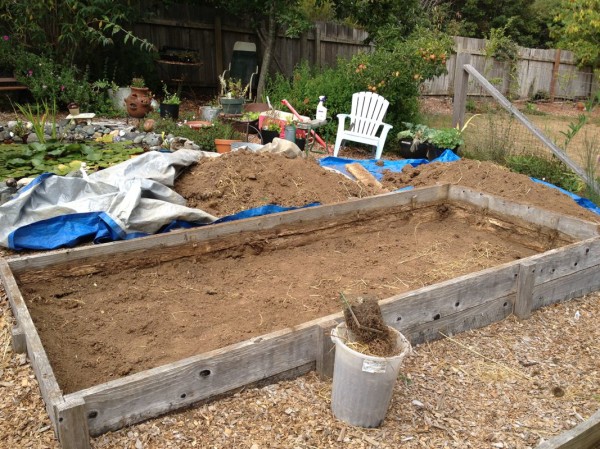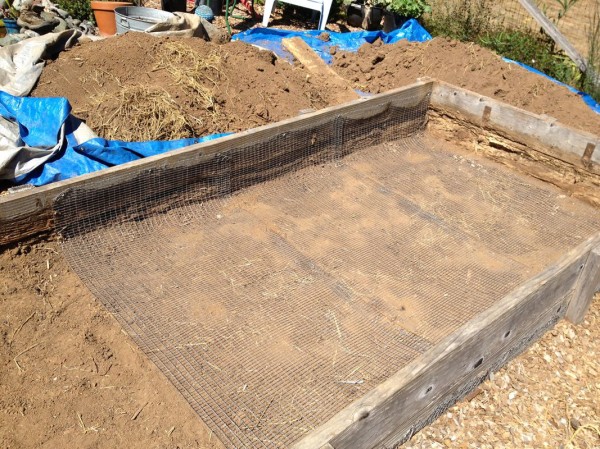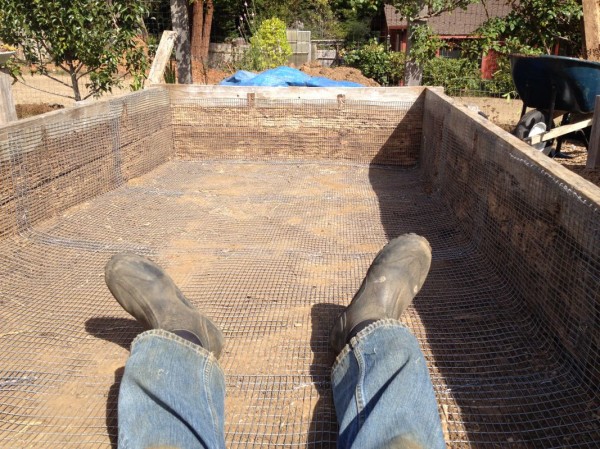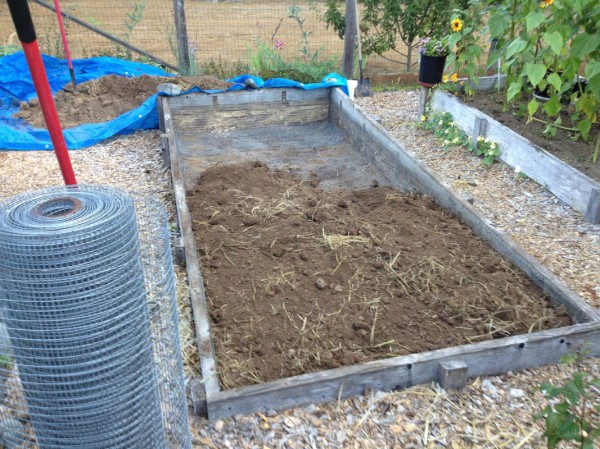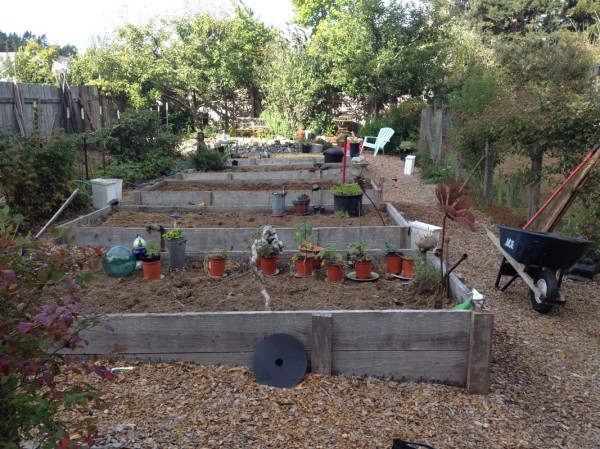Journal #1: New Walls
by Miles Raymer
Life is full of gophers.
This thought occurred to me shortly after watching a sturdy stalk of purple kale rock back and forth several times, seemingly of its own volition, before falling into a decidedly inharmonious horizontality. As I rushed over to save the plant from being dragged into the soil, I was pleased to have previous knowledge of how to spot gophers without actually, well, spotting them. Otherwise I might have been subject to the kind of head-scratching no doubt experienced in previous ages by burgeoning agriculturalists who might never before have encountered this clever and sometimes troublesome creature. Even as I fumed at the gophers’ recent attack on our five largest raised beds, I had to tip my hat to the little buggers for finally penetrating that layer of chicken wire we used to line the bottom of the beds when we first installed them seven years ago. Seven good years we’d kept them from their prize, but still they came when the time was right. Given my own status as an agronomic neophyte, there is a useful lesson here.
I’d anticipated that the end of my year teaching aboard would involve coming home to a lively garden flourishing through the last weeks of summer, but instead I returned to fight for the losing side of an already decided war. “This year’s garden is a wash,” Ma said a week or two before I boarded the plane in Miyazaki. “I’ve salvaged what I can.” Trying to take the view that every setback is an opportunity for learning and useful labor, I readied myself to begin figuring out how to go about depriving the gophers of their newfound buffet. When I arrived home, I quickly discovered that the word “gopher” sends most folks headed straight for poison or deathtraps. And while I’m not particularly opposed to killing these little guys, I didn’t see much reason to do so if it wasn’t absolutely necessarily. So Ma and I went looking for hardware cloth, which I’d used to line the bottom of raised beds while I was working with Barry Snitkin on his farm in Southern Oregon during Spring 2012. After going to a few places around town, we finally found a 100′ roll of 3′ wide hardware cloth, the same kind I’d used up north. In the end, I had to purchase a second roll to complete all five beds.
We brought the wire home, and I began spending my mornings digging the dirt out of each bed, relining the sides and bottom with the hardware cloth, then digging the dirt back in. The wood had rotted on the inside of the beds, so I had to nail the hardware cloth to the top of the inside, which was the only part that still had the integrity to hold a nail. Then I flattened the cloth down to the base of the bed, ultimately creating a kind of wire mesh bathtub. With five beds, each 5.5′ by 12.5′, there was a lot of dirt to move. It’s the kind of work I enjoy––methodical and exhausting, simple but not without its little challenges that require the occasional creative solution. After completing the first two beds to my satisfaction, I had a system down that helped me complete the final three much more quickly. I probably went a little overboard to ensure that the sheets of hardware cloth were bound together thoroughly enough to keep the gophers away, but I figured better to overdo it than risk coming outside one morning next year to find one or more of the beds at the mercy of these hungry critters once again. And today, roughly a month after I sunk the spade into the first bed, I raked the top of the final newly wired, gopher-proof stronghold.
It was a fun project, and probably one of the simplest I’ll face in the coming months. It provided a good starting point––steady, straightforward work that made my back and mind feel useful. Although I am satisfied that perhaps next year our beds will be gopher free, I couldn’t help but be reminded of the constant wall building that permeates our lives. Yes, walls are a necessary expression of our tribal nature, and they often serve a noble purpose. But they also divide us from each other, and from the rest of nature. They tantalize and taunt, promising mystery and enabling every sort of fissure, physical or otherwise. As much as we try to break the world into cleanly cut sections, life always eats away at the edges, and sooner or later the gophers come calling.
